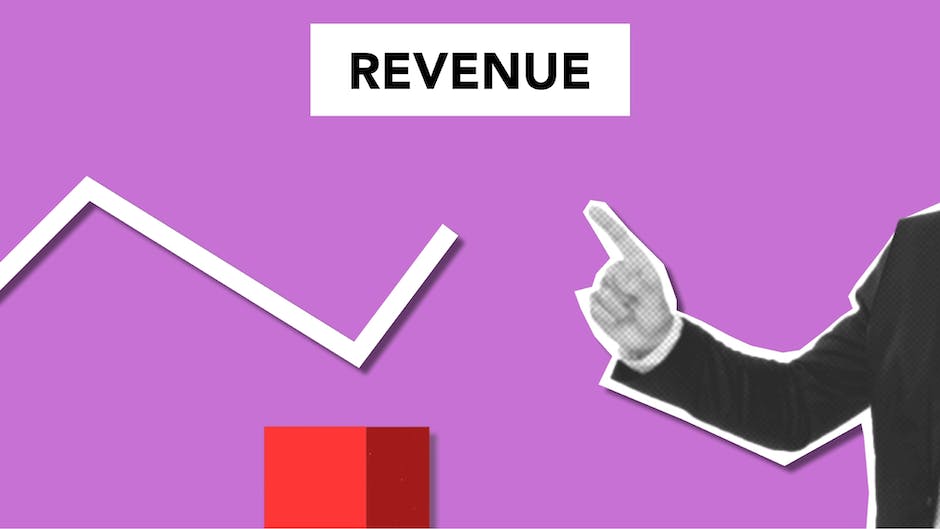Understanding and Planning Your Retirement Income
Retirement is often viewed as a time of relaxation and freedom from the daily grind. Yet, the quality of this awaited era largely hinges on the financial security one garners throughout their working years. As such, effective retirement income planning becomes not only a financial imperative but also a contingency plan for maintaining one’s quality of life in later years. This discussion aims to provide comprehensive insight into retirement and its importance while providing practical guidance on various retirement income sources, strategies involving saving or investing, and the construction and management of a retirement portfolio. Furthermore, it intends to shed light on the significant tax implications and distinctive income drawdown strategies pertinent to retirement planning.
Understanding Retirement and its Importance
Understanding Retirement: More than just a phase
Retirement can be broadly defined as the phase of life when an individual stops working full time. This period typically commences once an individual reaches the age of 65, though variations exist based on individual circumstances and regional norms.
The Importance of Planning for Retirement
Planning for retirement is a critical aspect of an individual’s financial life. Retirement income planning is not just about accumulating enough wealth to sustain life after work; it’s also about managing risk, tax planning, crafting a viable spending plan, and understanding how Social Security and other factors will affect your future financial status.
Without a retirement plan, individuals often face financial hardships in their later years when earning income may not be an option due to old age or poor health. To avoid such a predicament, it is vital to start planning for retirement as early as possible.
The aim of retirement income planning is to create a balanced strategy that allows an individual to maintain or improve their standard of living after retirement. In other words, it’s about ensuring a financially stable and comfortable life in the later years.
Dispelling Myths Around Retirement
There are several misconceptions regarding retirement that can often derail an individual’s retirement planning. One common myth is that social security will be enough to secure a comfortable retirement. In reality, social security benefits are only designed to replace about 40% of an individual’s pre-retirement income.
Another frequently believed myth is that one can save for retirement later in life. However, due to the compounding effect of money, starting early plays a significant role in accumulating substantial retirement savings.
The Necessity of Proactive, Long-Term Financial Planning
The importance of proactive long-term financial planning in securing a financially stable retirement cannot be overstated. Effective retirement income planning involves a mix of saving, investing and insuring. It’s important to diversify investments across various asset classes like equities, bonds, mutual funds, real estate etc.
Proactive planning also means that individuals must continuously monitor and adjust their retirement plans to account for life changes, market conditions, and changing laws. Furthermore, it’s essential to plan for healthcare costs and potential long-term care since these are among the most significant expenses one may face during retirement.
Planning for Retirement: Quality of Life
Preparation for retirement income significantly shapes the quality of life in our later years. Those who have effectively planned for retirement generally manage to retain their lifestyle even after their regular income source has ceased. On the flip side, those who are poorly prepared or who have not planned at all often face a drastic decline in living standards when they retire.
To sum it up, grasping the importance and concept of retirement is crucial to lead a worry-free life post-retirement. By being proactive and engaging in long-term financial planning, retirement can be more than just comfortable – it can be a life stage to look forward to. The earlier the planning for this inevitable phase begins, the more secure and enjoyable retirement can become.

Photo by joshuahanson43 on Unsplash
Types of Retirement Income
Social Security Benefits: An Essential Component of Retirement Income
Social Security benefits make up a significant part of most American retirees’ income. These benefits are typically calculated based on what you earned during your working years, and how much you consequently paid into the Social Security system. The greater your earnings were, the higher your benefits are likely to be.
For some individuals, delaying the commencement of these benefits until reaching full retirement age, or even longer, can be beneficial. This is because benefits increase by a certain percentage for each year you hold off after reaching your full retirement age – up until the age of 70. However, the drawback is that you’ll need other income sources to sustain your lifestyle before your benefits kick in.
But remember, the future of the Social Security program is often under political and financial pressure, making its long-term viability questionable. Hence, relying solely on social security for retirement income might not be the best plan.
Pensions: A Traditional Form of Retirement Income
In the past, pensions were a common source of retirement income. A pension provides monthly income for life and sometimes covers a surviving spouse as well. The amount you receive often depends on your years of service and your salary during your highest-earning years.
Today, however, pensions are not as common as they once were, especially because many employers prefer to offer 401(k) plans. A significant disadvantage of pensions is their inflexibility. If you switch jobs, you might leave behind a valuable pension. Frozen pensions do not grow over the years, which ultimately reduces your retirement income.
Annuities: A Guaranteed Income Stream
Annuities are instruments offered by insurance companies that provide regular payments for life, or for a chosen period of time. They function much like pensions, but you purchase them yourself or through an employer.
One advantage of annuities is that they can offer a guaranteed stream of income that lasts for life, reducing the risk of outliving your savings. However, they can be complex, and their fees often make them less attractive compared to other investment alternatives. Compared to other investments, the return on an annuity might be lower, due to the insurance component of the product.
Dividends: Passive Income from Investments
Investing in dividend-paying stocks or mutual funds is another strategy to generate retirement income. These investments pay out a portion of the company’s earnings to shareholders.
Ideally, a dividend-paying investment should bring in a steady stream of income and also appreciate in value over time. However, there is a risk involved as dividends can be decreased or stopped completely if the company underperforms.
Moreover, investing in the stock market requires a level of knowledge and comfort with market fluctuation, making it potentially not suitable for everyone.
Part-Time Work: An Active Form of Retirement Income
Lastly, many retirees opt to supplement their retirement income with part-time work. Besides adding a layer of financial security, continuing to work can also provide mental and social benefits.
Earning extra income may delay the need to dip into your retirement savings, allowing you to grow them further. Nevertheless, working in retirement might not be viable or desirable for everyone, especially for those with health issues. It’s crucial to factor in physical stamina and job market dynamics for older workers when considering this income source.
Grasping the Diverse Types of Retirement Income
Comprehending the different types of retirement income sources and their individual attributes is an integral part of comprehensive retirement income planning. Each source of income comes with its unique advantages and disadvantages and identifying the right blend that aligns with your personal requirements and scenario is paramount. Seeking guidance from a financial advisor could greatly assist in devising a personalized plan that guarantees financial stability in your golden years.

Saving vs. Investing for Retirement
The Basics of Retirement Savings
Saving for your retirement years is the most basic and time-honoured approach to amassing financial security for the later stages of life. Consistently allocating a portion of your earnings for future use creates a savings buffer that can cater to your financial needs when you conclude your professional career. There exists a plethora of options to save, from the straightforwardness of conventional savings accounts to the potential for higher returns in financial instruments such as Certificates of Deposit (CDs) and money market funds.
Merits of Saving for Retirement
The primary advantage of saving is its low risk. Your money is FDIC-insured up to $250,000 per individual per bank, meaning that regardless of what happens in the financial market, your money is safe. Savings accounts, CDs, and money market funds also offer easy access to your funds, allowing you to make withdrawals when necessary.
Demerits of Saving for Retirement
The downside of saving is that the potential returns are much lower in comparison to investing. Inflation may outpace your savings interest rate, leading to a decrease in purchasing power over time. This is especially concerning when saving for a long-term goal such as retirement, as the cost of living is likely to rise significantly over several decades.
The Concept of Investing for Retirement
Investing, unlike saving, involves committing money to an endeavor with the expectation of obtaining an additional income or profit. This includes investments in stocks, bonds, mutual funds, and real estate. Effectively investing your money can yield much higher returns over the long term, making this a popular strategy for retirement income planning.
Merits of Investing for Retirement
The primary advantage of investing is the capability for your money to grow exponentially over time, thanks to the power of compound interest. This increase can significantly outpace inflation over the long term, letting your wealth grow in real, purchasing-power terms. Furthermore, certain types of investments, such as real estate, not only produce income but may also provide additional benefits such as a place to live or financial leverage.
Demerits of Investing for Retirement
The main drawback with investing is its inherent riskiness. The value of investments can fluctuate, sometimes dramatically, leading to potential loss. This is especially true for higher-risk investments such as stocks. Furthermore, unlike savings, most investments are not guaranteed. Liquidity can also be a problem with certain types of investments. For instance, while a real estate investment could increase in value and provide rental income, it might also be difficult to quickly sell if cash is needed immediately.
Harmonizing Retirement Savings and Investments
Your financial future in retirement is often shaped by the unique blend of savings and investments you’ve accumulated. Many factors come into play, like your financial goals, how much risk you’re willing to take, your time until retirement, and your income level. By embracing a varied and well-balanced portfolio, you can leverage the benefits of both savings and investments while offsetting the downside risks. With the expert advice from a reliable financial advisor, personalized to your situation and preferences, you’ll be equipped to navigate the complexities of planning for retirement income.

Building and Managing a Retirement Portfolio
Guidelines: Constructing and Managing a Retirement Fund
Comprehending the intricacies of meticulously creating and maintaining a retirement fund is fundamental in securing your financial soundness for the long haul. An effectively managed retirement fund involves having a diverse range of investments, ensuring risk is kept in check, defining suitable withdrawal rates, and conducting regular reassessments of your portfolio alignment.
The Importance of Diversified Investing
A diversified investment portfolio is instrumental in mitigating risk and potentially enhancing returns, especially over the longer term. Diversified investing involves spreading your investments across various asset classes, such as stocks, bonds, mutual funds, real estate, and possibly more sophisticated investments such as private equity and commodities.
Also, within each asset class, it’s important to diversify. For example, within the asset class of stocks, you might diversify further by investing in a variety of sectors such as healthcare, technology, consumer goods, and financial services. This sort of diversification can guard against volatility in any single asset class or sector.
Risk Management in Retirement Planning
Managing risk in retirement planning often involves a shift in focus as you approach retirement. While growth and accumulation of assets are typically the priority during your working years, the emphasis gradually turns to preservation of capital as retirement nears.
Fixed-income assets like bonds and Treasury notes may play a more significant role in reducing risk. Though these investments often provide lower returns, they can offer more stability than stocks. The exact allocation to stocks, bonds, and other investments will depend on individual risk tolerance, retirement goals, and time horizon.
Determining an Optimal Withdrawal Rate
An optimal withdrawal rate in retirement can be challenging to determine as it depends on various factors including your savings, your lifespan, the rate of return on your portfolio, and others.
As a general guideline, the popular “4% rule” suggests withdrawing 4% of your retirement savings in the first year and then adjusting each subsequent year’s withdrawal for inflation. This rule is based on historic market returns and inflation rates, aiming to ensure that your savings last for at least 30 years. However, this rule has faced criticism recently with lower return forecasts. Thus, it’s crucial to revisit your withdrawal plan regularly in light of the current market environment and personal circumstances.
Adjusting Retirement Strategy Over Time
The most effective retirement portfolios are not “set and forget”. They need to be adjusted in response to changing market conditions, evolving personal circumstances, and new laws or tax rules.
As a general rule, it might be worthwhile shifting towards more conservative investments as you age. You may want to gradually decrease your exposure to riskier asset classes such as stocks and increase your allocation to more stable assets like bonds.
Seeking professional advice from a financial planner or retirement specialist can be beneficial to help set a clear path towards your retirement goals, adopt the right strategies, and make wise investment decisions. Reviewing and adjusting your retirement plan at least annually is often a very sound strategy.
Building and managing a retirement portfolio is a long and often complex task. It’s not a sprint, but a marathon that requires you to show patience, discipline and make thoroughly-informed decisions. Only with such approach can you accomplish your goal of securing a financially stable and comfortable retirement life.

Tax Planning for Retirement
Tax Implications from Different Retirement Income Sources
In order to adequately plan for your retirement, a clear understanding of how different retirement income sources are taxed is vital. Common sources such as Social Security benefits, tax-deferred account withdrawals like 401(k)s and traditional IRAs, pensions, and annuities all come with unique tax implications. For instance, Social Security benefits could be partially taxable depending on your total income and tax filing status. Withdrawals from tax-deferred accounts are usually taxed as regular income and pensions usually follow a similar pattern. On the other hand, when it comes to annuities, the initial investment withdrawal is often tax-exempt.
Strategies for Minimizing Taxes in Retirement
There are several strategies that retirees may use to minimize their tax burden. They include:
- Careful Withdrawal Planning: Retirees can potentially reduce their tax obligations by strategically planning which accounts to withdraw from and when. This involves considering both the tax status of different accounts and one’s personal income tax situation.
- Roth conversions: By converting a portion of traditional retirement account into a Roth account, future withdrawals become tax-free. This may be advantageous if you expect your tax rate to be higher in retirement.
- Tax-efficient Investing: Investing in tax-efficient options such as index funds or exchange-traded funds (ETFs) can also help reduce the potential for taxable distributions.
Tax Benefits of Retirement Accounts and Contributions
The tax benefits of retirement accounts can be substantial. For traditional retirement accounts like 401(k)s or IRAs, contributions are typically made with pre-tax dollars, reducing your taxable income in the year that you make the contribution. The investments also grow tax-deferred, meaning you won’t pay taxes on gains until withdrawals in retirement.
Roth retirement accounts, on the other hand, are funded with after-tax dollars, but the investments grow tax-free, and qualified withdrawals in retirement are tax-free as well. This can give investors another way to minimize their tax burden in retirement.
Maximizing Your Retirement Income Effectively
Maximizing your net retirement income effectively involves a well-thought-out retirement tax strategy. Being knowledgeable about the tax consequences of various retirement income streams and exploiting the tax advantages of specific retirement accounts can increase your potential to retain a greater share of your hard-earned money. This effectively increases your resources during retirement. How to efficiently manage taxes during your retirement plays a vital role in retirement income planning, significantly affecting your financial well-being in your later years.

Photo by javierdelgado on Unsplash
Retirement Income Drawdown Strategies
Strategizing Your Retirement Income Withdrawals
Grasping and implementing a variety of income drawdown strategies for your retirement is a fundamental part of retirement income planning. These strategies are designed to guide retirees on when and how to tap into their retirement funds. The objective is to ensure that the funds last throughout their retirement years without significantly increasing their tax liability.
Common Drawdown Strategies
Common drawdown strategies include systematic withdrawal, annuity, bucket strategy, and relying on dividends and interest. Each of these strategies has its own set of advantages and drawbacks, and their suitability varies depending on individual financial circumstances and retirement goals.
Systematic Withdrawal Strategy
One of the most common strategies is systematic withdrawal. This strategy involves regularly withdrawing a fixed percentage from your retirement savings each year. This method is simple and provides a predictable income, but it carries a risk. If the market performs poorly, or if you live longer than expected, you may deplete your savings prematurely.
Annuity Strategy
A guaranteed income annuity is another strategy that can provide a stable income throughout retirement. This strategy involves purchasing an annuity from an insurance company. In return, the company provides a monthly income for life. The downside to this strategy is that annuities often come with high fees and charges.
Bucket Strategy
The bucket strategy involves dividing your retirement savings into several ‘buckets’ allocated for different periods of your retirement. The first ‘bucket’ is for immediate expenses in early retirement, the second ‘bucket’ for mid-retirement, and the last one for late retirement. This strategy provides flexibility and can be a good hedge against market downturns.
Dividends and Interest Strategy
Some retirees prefer to live off the dividends and interest their investments generate and leave the principal amount untouched. While this strategy can work well if you have a substantial retirement portfolio, it may not provide sufficient income if your savings are modest.
Choosing a Suitable Drawdown Strategy
Choosing a suitable drawdown strategy requires you to consider your individual needs, risk tolerance, life expectancy, and retirement goals. If longevity runs in your family and you have a lower-risk tolerance, an annuity or a bucket strategy could be a good fit. If you have a higher risk tolerance, you might choose a systematic withdrawal method. It’s always a good idea to consult with a financial advisor before making such an important decision.
Monitoring and Adjusting Your Strategy
Market conditions fluctuate and personal needs or circumstances change, requiring you to monitor and adjust your retirement income drawdown strategy. Regularly reviewing your strategy helps ensure its continued effectiveness. For instance, during a bear market, you may wish to lower your withdrawals to protect your principal, or when a major life event happens, like serious sickness, you may need to adjust your strategy to meet higher-than-expected medical expenses.
Conclusion
Retirement income planning is a complex, ongoing process, but understanding the various income drawdown strategies can help you create a plan that ensures a comfortable retirement. It involves choosing a suitable strategy, implementing it while managing risks and tax implications, then monitoring and adjusting it according to changing personal needs and market conditions. A financial advisor would be instrumental in guiding these financial decisions, helping you make the most of your retirement savings.

Cumulatively, it’s clear that retirement income planning involves numerous dynamic components and is not a one-size-fits-all endeavor. It requires careful consideration of income types, diligent saving or investment strategy, astute portfolio management, savvy tax planning, and effective retirement income drawdown methods. Moreover, staying adaptable and ready to amend strategies in response to evolving market conditions and personal needs is crucial. With understanding and effective execution of these principles, you can steer your ship towards the safe harbor of a financially secure retirement, preserving your quality of life in your golden years.



Leave a Reply